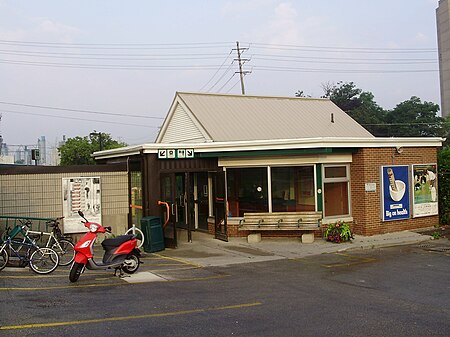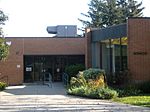Mimico GO Station

Mimico GO Station is a railway station in the GO Transit network located in the Etobicoke area of Toronto, Ontario, Canada. It is a stop on the Lakeshore West line train service, serving the Mimico neighbourhood. The small station building is situated north of the tracks on the east side of Royal York Road. The building is connected by a tunnel under the tracks and stairs to the platforms, which are therefore not wheelchair accessible. There is an additional bypass track which runs between the platforms and another two tracks on the south side, which access the Willowbrook Rail Maintenance Facility. This station and Long Branch are the only two stations on the Lakeshore West line which are not fully accessible.
Excerpt from the Wikipedia article Mimico GO Station (License: CC BY-SA 3.0, Authors, Images).Mimico GO Station
Cavell Avenue, Toronto Etobicoke
Geographical coordinates (GPS) Address Nearby Places Show on map
Geographical coordinates (GPS)
| Latitude | Longitude |
|---|---|
| N 43.616388888889 ° | E -79.497222222222 ° |
Address
Griggs Manor
Cavell Avenue 98
M8V 1P1 Toronto, Etobicoke
Ontario, Canada
Open on Google Maps









